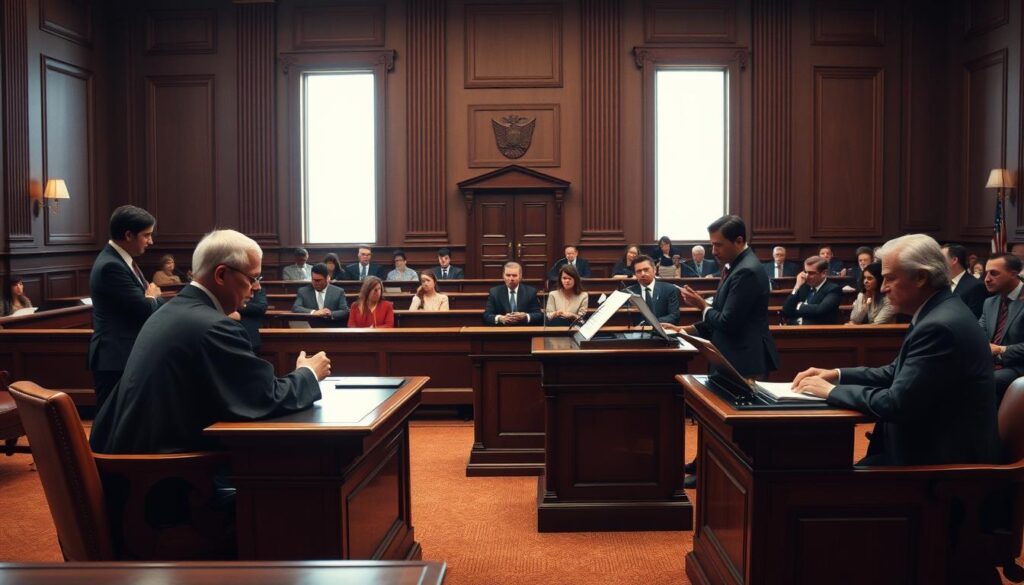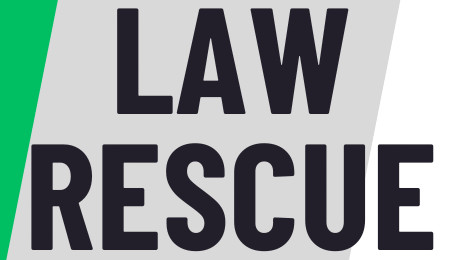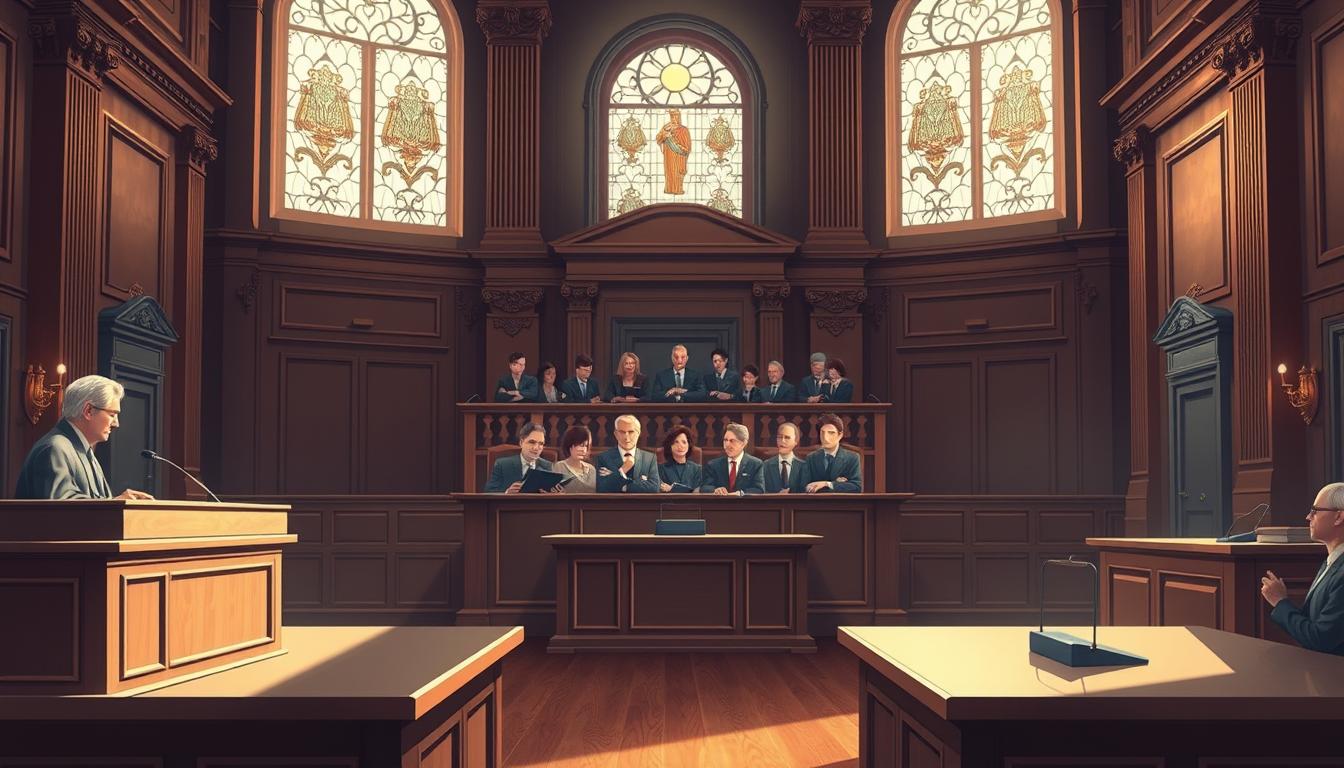Ever wondered what happens when people or companies go to court? You’re not alone. Many don’t know how the legal system handles disputes.
Civil litigation is how we settle disputes in court. It’s about resolving issues between different parties. Knowing the basics can help you if you’re ever in a legal fight.
Civil litigation is common in our lives. It’s seen in business disagreements and personal injury claims. Learning about it can prepare you for legal challenges.
Civil Litigation: Definition and Purpose
Understanding civil litigation is key when dealing with the legal system. It’s about solving disputes in court between people, groups, or governments. It’s important to know the difference between civil and criminal litigation, as they have different goals and rules.
Burden of Proof Differences
In civil cases, the burden of proof is not as high as in criminal cases. Here, you only need to show that your story is more likely true than not. This is easier than the “beyond a reasonable doubt” standard in criminal cases.

Civil cases often deal with contract issues, torts, or other wrongs. The main aim is to fix the harm done to the affected party. This usually means getting money back or compensation for losses.
Knowing what civil litigation is and its purpose is important for those in a civil case. Understanding the burden of proof and available remedies helps you better understand the legal process. It also helps you make informed choices about your case.
Common Types of Civil Litigation Cases
Knowing about common civil litigation cases like auto accidents and medical malpractice helps you understand the legal world. Civil litigation deals with many legal issues solved in court.
Auto Accidents and Premises Liability
Auto accidents often lead to civil lawsuits. If you’re in a car crash, you might get hurt or damage your property. This can start a legal fight over who should pay for the damage.
Premises liability is also key. It holds people or businesses accountable for injuries on their property because of their carelessness.

For example, slipping and falling in a store because of a known hazard could lead to a lawsuit. These cases focus on proving someone was careless and how much harm they caused.
Medical Malpractice
Medical malpractice is a serious civil lawsuit issue. It happens when doctors or healthcare workers don’t follow the usual care standards, hurting patients. This can include mistakes during surgery, wrong diagnoses, or bad treatment.
If you or a family member has been hurt by medical malpractice, knowing your rights and the legal steps is vital.
Medical malpractice cases are complex. They need expert witnesses to show the usual care and how it was not followed. These cases show how important it is to hold healthcare providers accountable.
In summary, civil litigation includes many legal disputes, from car accidents to medical malpractice. Knowing about these common cases helps you understand your legal situation and options if you’re in a legal fight.
Key Participants in the Civil Litigation Process
Understanding the key players in civil litigation is vital. The process includes several individuals who are critical to the lawsuit and trial.
The plaintiff starts the lawsuit by filing a complaint. They claim the defendant has harmed them. The defendant must then respond to these allegations.

Lawyers for both sides are essential. They present their clients’ cases, collect evidence, and argue in court. Judges make sure the law is followed and the trial is fair.
In some trials, juries decide the outcome. Knowing the roles of these participants helps you understand the civil litigation process better. It also aids in making informed decisions during the lawsuit and trial.
The Civil Litigation Process: Step1 – Pre-Filing Considerations
Deciding to take legal action through civil litigation requires careful thought. You must first decide whether to file in state or federal court. This choice can greatly affect your case’s outcome.
Choosing between state and federal court depends on the case’s nature and laws involved. State courts handle cases based on state laws. Federal courts deal with federal laws or constitutional issues. The nature of your case and the laws applicable to it will guide this decision.
State vs. Federal Court Considerations
Several factors influence your choice between state and federal court. If your case involves a federal law or parties from different states, federal court might be best. Cases with state laws or local issues are often better in state courts.
Understanding these pre-filing considerations is key to navigating civil law. By carefully evaluating your case, you can make an informed decision. This sets a strong foundation for your civil litigation case.
The Civil Litigation Process: Step2 – Filing a Lawsuit
Filing a lawsuit is a big step in civil litigation. It needs careful planning and following legal rules. You prepare a complaint or statement of claim that explains your problems and what you want fixed.
To file a lawsuit right, your complaint must be correct and have all needed details. This includes the case facts, legal reasons for your claim, and the damages you seek. This is a critical stage where the foundation of your case is laid, and any mistakes can affect your case’s outcome.
Proper Service Requirements
After filing, serving the defendant is the next important step. This makes sure the defendant knows about the lawsuit and can respond. You usually give the complaint and a summons to the defendant personally or by a court-approved method.
It’s key to follow your area’s rules for serving the process. Not doing so can cause delays or even dismiss your case. Knowing and following these rules is essential for moving your case forward.
By preparing your lawsuit well and serving it correctly, you can start the civil litigation process. This sets the stage for the defendant’s response and the discovery phase.
The Civil Litigation Process: Step3 – Responding to a Lawsuit
When you get served with a lawsuit, it’s a big deal. You need to act fast and think carefully about your next steps. It’s important to respond on time to avoid losing the case by default.
You can respond in a few ways, like filing an answer or a motion to dismiss. An answer says you agree or disagree with the lawsuit’s claims. A motion to dismiss asks the court to throw out the case if it’s not legally valid.
Deadlines for Responses
The time you have to respond varies by where you are. Usually, it’s between 20 to 30 days after you’re served. Always talk to a lawyer to make sure you meet the deadline and choose the right response.
| Response Type | Description | Typical Deadline |
|---|---|---|
| Answer | A document that responds to the allegations | 20-30 days |
| Motion to Dismiss | A request to dismiss the case due to legal issues | 20-30 days |
Understanding your options and the implications of each response is vital. Talking to a lawyer is key. They can guide you through this tough time and protect your rights in the civil case.
The Civil Litigation Process: Step4 – Discovery Phase
The discovery phase is a key part of court proceedings. It’s when both sides gather evidence. Understanding this phase is vital for a lawsuit’s success.
There are several tools used in the discovery phase. These include interrogatories, requests for documents, and requests for admission. Each tool helps uncover the case’s facts.
Interrogatories
Interrogatories are written questions sent by one party to the other. They must be answered in writing under oath. These questions help clarify the case’s facts and offer insights into the opposing party’s arguments.
Requests for Production of Documents
Requests for production of documents let a party get important documents from the opposing side. This can include emails, contracts, and other records that are key to the case.
Requests for Admission
Requests for admission ask a party to admit or deny certain facts or statements. This simplifies the issues in dispute and can make the trial process smoother.
The discovery phase is a critical part of civil litigation. Knowing how to use these tools well can help you prepare for trial and strengthen your case.
| Discovery Tool | Purpose | Benefits |
|---|---|---|
| Interrogatories | Clarify facts through written questions | Provides insights into the opposing party’s arguments |
| Requests for Production of Documents | Obtain relevant documents from the opposing party | Access to important records and evidence |
| Requests for Admission | Simplify issues by admitting or denying facts | Streamlines the trial process |
By using these discovery tools, you can improve your position in court and handle a lawsuit’s complexities better.
The Civil Litigation Process: Step5 – Pre-Trial Motions
Pre-trial motions are key in civil litigation. They are legal requests made before the trial starts. They aim to settle certain issues or clarify parts of the case.
These motions can greatly affect your trial’s outcome. They include motions to dismiss, motions for summary judgment, and motions in limine. Knowing about these motions and their purposes is vital for preparing for trial.
Motions in Limine
A motion in limine is a specific type of pre-trial motion. It asks the court to decide on the admissibility of certain evidence before the trial. This is important to prevent harmful evidence from being shown during the trial.
Here’s a summary of common pre-trial motions and their purposes:
| Motion Type | Purpose | Potential Impact |
|---|---|---|
| Motion to Dismiss | Requests the court to dismiss the case or certain claims | Can end the case or limit the claims |
| Motion for Summary Judgment | Asks the court to rule in favor of one party without a trial | Can resolve the case without going to trial |
| Motion in Limine | Seeks to exclude or include specific evidence at trial | Can affect the evidence presented at trial |
By using pre-trial motions wisely, you can strengthen your case. It’s important to work with your attorney to choose the best motions for your situation.
The Civil Litigation Process: Step6 – Settlement Negotiations
Settlement negotiations are key in the civil litigation process. They can happen at any time. Knowing how they work is vital for a good outcome.
These talks aim to find an agreement both sides can live with. Many things can affect these talks. This includes the strength of the evidence and the costs of going to court.
Tax Implications of Settlements
Think about the tax side of a settlement. Usually, the IRS sees settlement money as taxable income. But, if it’s for a physical injury or illness, it might not be taxed. Knowing this can help you make smart choices in negotiations.
| Settlement Type | Tax Implications |
|---|---|
| Physical Injury/Illness | Generally tax-free |
| Emotional Distress | Taxable unless linked to physical injury/illness |
| Punitive Damages | Taxable |
When you’re in settlement talks, remember the tax side. This can help you get more money. Talking to a tax expert can give you advice that fits your case.
In civil law, settlement talks are a big deal. They can change the course of your case. By understanding these talks, you can handle the challenges of civil litigation better.
The Civil Litigation Process: Step7 – Trial Preparation
You are now at the trial preparation stage of your civil case. This stage requires careful organization and witness preparation. It’s a critical part of the civil litigation process, where you finalize your case strategy and prepare for the courtroom.
Effective trial preparation involves several key steps. First, you need to organize your evidence. Make sure all documents, records, and exhibits are in order and easy to find during the trial. This helps present a clear and strong case to the court.
Technology in the Courtroom
Technology is now a big part of civil litigation cases. You can use it to make your case more engaging and persuasive. This includes digital evidence, video testimonies, and interactive displays to explain complex points.
Preparing your witnesses is also key. Make sure they know the courtroom procedures and their role in the trial. Rehearsing their testimonies can boost their confidence and readiness for cross-examination.
As you get closer to the trial, think about the strategies the opposing party might use. Being ready for different scenarios helps you adjust your case strategy as needed. This keeps you ahead during the trial.
In summary, thorough trial preparation is essential for a successful outcome in your civil litigation case. Organize your evidence, prepare your witnesses, and use technology well. This way, you can present a strong case to the court.
The Civil Litigation Process: Step8 – The Trial
The trial is a key moment in the civil litigation process. It’s where your case is shown to a judge or jury. This is the final step, where both sides share their arguments and evidence.
At the trial, each side gets to show their case. They use witness statements, documents, and other evidence. This evidence is key to building a strong case.
The judge is very important in the trial. They make sure everything is fair and follows the law. They decide what evidence is allowed, guide the jury, and make the final decision.
In some cases, a jury decides the outcome. They look at the evidence and follow the judge’s instructions. This way, justice is served.
The trial can be complex and take a long time. But it’s essential for solving legal disputes. Knowing the roles of the judge, jury, and how evidence is presented helps you understand this important stage.
Post-Trial Procedures and Appeals
After the trial ends, you might face post-trial steps, like appeals. This part is key as it shapes your lawsuit’s future.
Standards of Review
Appealing a trial verdict? Knowing the standards of review is key. Appellate courts use different standards for different appeals. For example, they review law questions de novo, looking at them fresh without the trial court’s view.
But, they check factual findings for clear error or substantial evidence. This means they’ll keep the trial court’s decisions unless they’re wrong or lack enough evidence.
Won your lawsuit? You’ll need to collect the judgment. Finding the defendant’s assets can be tough, as they might be in many places.
To enforce the judgment, you can use methods like wage garnishment or liens. It’s important to act fast, as delays can make it harder to collect.
Knowing about these steps is essential for managing your case after the trial. Whether appealing or collecting a judgment, being informed helps you make smart choices.
Alternatives to Civil Litigation
You don’t always need to go to court to solve a dispute. There are many other ways to handle civil law issues. These options can save time, cut costs, and lessen stress.
Mediation is a good choice. It involves a neutral person helping both sides talk and find an agreement. This method is less scary than going to court.
Arbitration is another option. A neutral person makes a final decision after listening to both sides. It’s quicker and less formal than a court trial.
Settlement negotiations let you talk directly to find a solution. You can do this with or without lawyers. It’s a flexible way to settle disputes.
These alternatives to civil litigation have many benefits. They can lower legal costs and speed up the process. Before taking legal action, consider these options. They might be the best fit for your situation under civil law.
Working With a Civil Litigation Attorney
Dealing with civil litigation can be tough. But, having a good attorney makes a big difference. They help you understand the legal steps and protect your rights.
It’s important to know how your attorney charges. There are mainly two ways: contingency fees and hourly rates.
Contingency vs. Hourly Billing
Contingency fees mean your attorney gets a percentage of what you win. This way, they work hard for you because they want to win too.
Hourly billing means you pay for each hour your attorney works. It might cost more, but you know exactly what you’re paying for.
Knowing how your attorney charges helps you plan better. It lets you make smart choices during your case.
Costs and Timeframes of Civil Litigation
It’s important to know the costs and time needed for civil litigation. This process can be expensive and take a lot of time. You’ll have to pay for lawyer fees, court costs, and evidence gathering.
The time it takes to settle a civil case varies. It depends on the case’s complexity, the court’s schedule, and if both sides want to settle. A simple case might end in a few months, but a complex one could take years.
Factors That Can Extend Litigation
Several things can make a civil case last longer. These include:
| Factor | Description | Impact |
|---|---|---|
| Complexity of the Case | The more complex the case, the more time-consuming it is to gather evidence and prepare for trial. | Significant delay |
| Court Schedule | Courts have heavy caseloads, leading to delays in scheduling hearings and trials. | Moderate to significant delay |
| Discovery Process | The process of exchanging information and evidence can be lengthy. | Moderate delay |
Knowing about these delays can help you prepare for a civil case. Understanding what can slow down the process can make navigating legal disputes easier.
Conclusion: Navigating the Civil Litigation Landscape
Understanding civil litigation is key. It involves knowing the steps in court proceedings. A lawsuit is complex, from the start to after the trial.
Knowing the civil litigation process helps you succeed. It prepares you for the challenges ahead. An experienced attorney can greatly improve your case’s outcome.
As you move through civil litigation, knowing your options is important. This includes settlement negotiations and understanding costs and time. Being informed helps you manage the process well and get the best result for your lawsuit.

